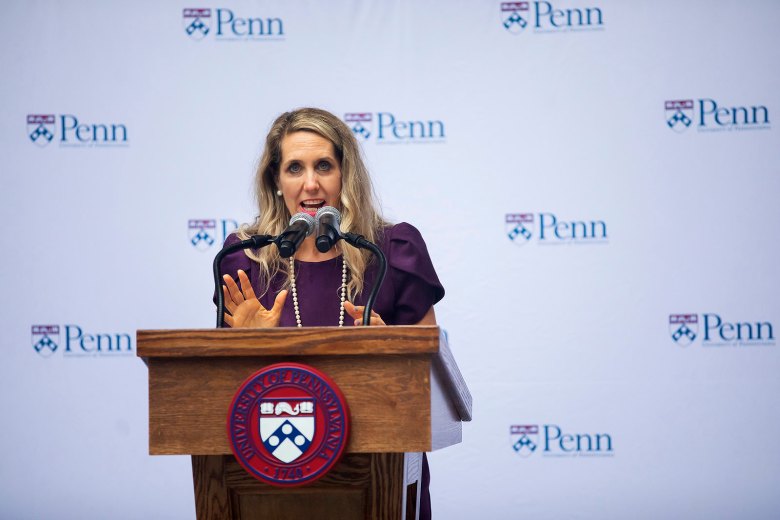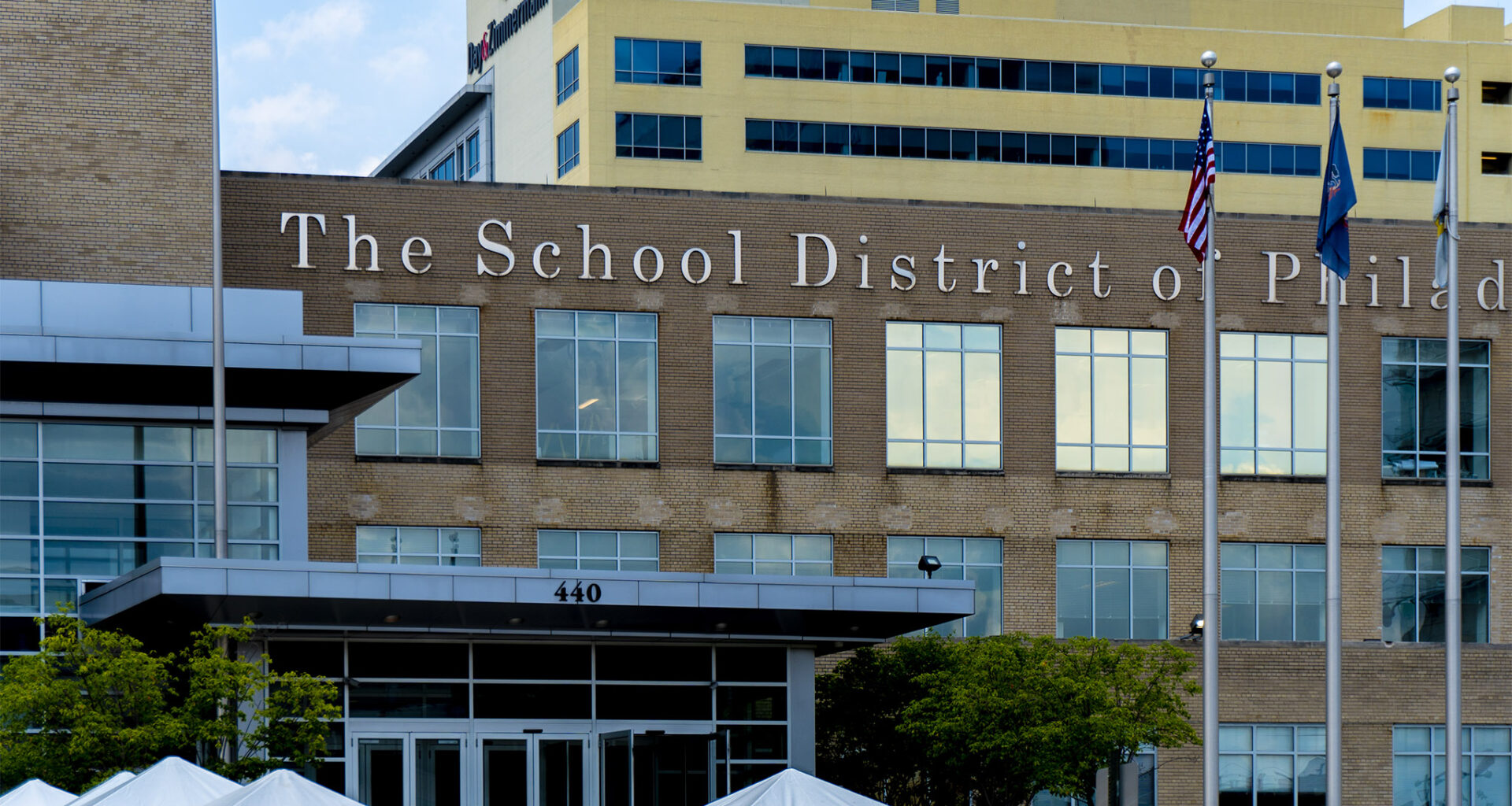In many high-school classrooms today, the rise of artificial intelligence tools is quietly reshaping what it means to “put pen to paper.” Students are increasingly using AI assistants to brainstorm ideas, draft paragraphs, even polish final versions of essays — raising questions about authorship, skill development and fair assessment.
Case in point: That last paragraph was generated through ChatGPT.
So with these new, tempting writing shortcuts — where it’s practically impossible to judge the difference between what was written by a human and what’s not — how are students and teachers in Philadelphia navigating?
“It’s a little idiosyncratic,” said Amy Stornaiuolo, a professor of education at the University of Pennsylvania, who researches AI in schools. “It’s up to the individual instructor how they want to take up AI in any particular way. There’s not like a university-wide, or even a school-wide set of guidelines or mandates or rules or approaches.”
In other words, AI technology has arrived at such a breakneck pace it’s hard to keep up.
“I work primarily with teachers and students,” Stornaiuolo said. “I work a lot with young people and how they might be using it in their everyday lives, both in and out of school. And I kind of hear the same story, which is that they don’t get a lot of guidance. They might have a teacher who is kind of up to date with it, but in general, schools themselves tend not to be having a unified message.”
In 2023, Common Sense Media conducted a study, which showed that half of students between 12 and 18 years old reported using ChatGPT for schoolwork, 38% said they did so without permission from their teacher and 56% said they knew a friend or classmate who had used the technology. And that was two years ago.
So whether teachers and schools are ready to alter their curriculum to factor in AI or not, many students are already relying on the technology.
“There is some early data that indicates that using AI in the classroom or for writing and communication, probably will, or does, displace key moments of development that build the skills that allow us to do increasingly difficult tasks,” said Kris Perry, the executive director of Children and Screens, an organization that educates about kids and tech with events, webinars, podcasts and more.
“MIT very recently found when students wrote essays with LLMs, large language models, it produced lower levels of brain activity than if they had written it without any assistance at all,” Perry said.
Artificial intelligence could have a negative impact on student’s independent creativity.
“If you repeatedly use a tool that’s designed to do analytical work for you, it just reduces the brain activity and what some people refer to as the inter region of the brain where that deep thinking would usually occur,” Perry said. “And it’s displacing the growth of that area by offloading the cognitive effort onto the tool. So the tool, you might say, is expending the effort and the student isn’t.”
What’s more, if students are using AI to generate their work — they may feel less satisfaction and sense of ownership when they finally finish that essay and hand it in.
‘“Right to be concerned”
When it comes to AI, parents are “right to be concerned,” according to Stornaiuolo, and the best way to address that concern is to get informed.
“For parents, really understanding the policies around [AI] for the schools that their kids are in would be really important,” she said. “There’s a lot of really very serious ramifications of using it in particular ways that I think being informed about would be really helpful.”
 Penn professor Amy Stornaiuolo. (Courtesy of Amy Stornaiuolo)
Penn professor Amy Stornaiuolo. (Courtesy of Amy Stornaiuolo)
Stornaiuolo’s research team is intergenerational — meaning that while she studies high school students, she’s also working with high school students.
Angelina Vo, 17, has been working on Stornaiuolo’s WAi (Writing with AI) research team over the last year. She’s a senior at East High School in West Chester.
“As a high school student, I feel like I’ve kind of experienced the positive and the negatives,” Vo said of her AI usage.
When she first began experimenting with AI tools, she would rely on it to generate content for writing assignments as a way to “maximize” her time.
“When I was going through applications for summer programs, I realized that I had completely lost my style and my personality in my writing,” she said. “I kind of had to go back and discover, ‘Where did I go wrong?’ “
She had lost those “quirky vocabulary words” she liked to use, and found that her sentence and paragraph structures felt foreign.
“I had to go back and look at old assignments that I did and kind of try to regain how I used to write,” Vo said.
Using AI responsibly
Conversations around AI in schools are often tinged with a sense of fear, but Stornaiuolo’s research shows that teenage usage of the technology is nuanced.
“At the core, is that tension,” she said, “which is, ‘How to create.’ ”
“A lot of my fellow classmates are misusing [AI] and letting it think for them,” Vo said, “whereas I feel like there’s a way that you can use AI responsibly and keep your own thoughts.”
But what does responsible AI use look like?
“We talk about boundary-making practices in our work,” Stornaiuolo said. “Boundary-making practices that [students] engage in are things like, ‘I only upload small parts of it and not the whole thing to get specific kinds of feedback, or ‘I keep it in a separate window so I can keep it separate from my real writing, and see what it does with my writing over here, but not let it infect’ — some people use that term — ‘my original writing.’ ”
The team is also monitoring how AI might affect students from different socioeconomic backgrounds.
“There’s a disproportionate number of students from marginalized identities and communities who are accused of using AI when they have not,” Stornaiuolo said.
Some teenagers that she has spoken with are so concerned about getting accused of cheating that they don’t use AI tools at all.
“Kids from higher socioeconomic status families have parents that have more options for distracting them,” Perry said. “Putting them outside in the real world, supervising them, controlling their devices, giving each child its own individual device and controlling it, whereas children from lower-income homes may be sharing a device with an older child, parents that are working multiple jobs, not in a safe neighborhood, where they can be outside away from the device.”
In other words, kids from higher socioeconomic backgrounds might receive more education on how to use new technologies responsibly.
Letting teens guide their future
Whether we like it or not, AI is here and is shaping the future of how writers write.
“The adolescent brain is still not fully developed,” Perry said. “It’s at a very sensitive point actually in development, a little like early childhood, where the executive function of the frontal lobe is not fully formed.”
Still, she doesn’t think that means that teens should have their agency taken away.
“This is their future,” Perry said. “They do hold the power to go online and use the tools before they’re safe. They can support each other in understanding what they are, what they aren’t, and how they’ll impact their brains.”
Research shows that letting them shape the path forward might be the best approach to getting them interested in responsible AI use. A study from the Brookings Institute revealed that students feel more engaged in their studies when they are given some freedom and say in their curriculums and projects.
“We recommend that educators — including state, districts, and school leaders, alongside teachers and other education personnel — find ways to maximize students’ opportunity to explore,” the study said.
Perry echoed this idea.
“Children’s safety was not top of mind when they developed these products,” she said. “This is a great opportunity for the youth to step up and lead and support each other in slow-walking this while they work out some of the safety issues that have already cropped up with the products.”
Certainly, Stornaiuolo’s intergenerational research team is championing this idea.
“I think that we can trust teenagers,” Vo said. “We have to teach people across all ages. This is a new thing that we’re being introduced to. So everybody is going to have questions about it — questions about whether they should or should not use it … If people are taught about it, if they’re more aware about how it can change your writerly identity, or impact this and that, then they may be more mindful of how they use it.”
